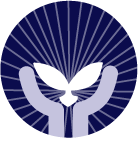Tina Oyer Ponce
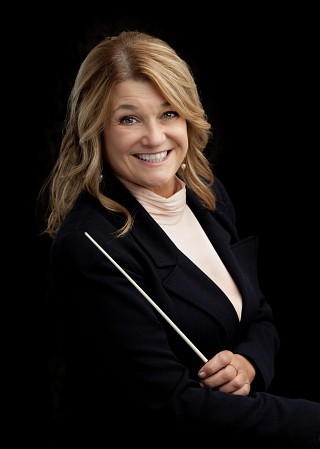
Tina Oyer Ponce, violinist, earned a B.M. in Music Education from the School of Music at SUNY Fredonia and was the recipient of the prestigious academic scholarship, Monbusho, to research music education in Japan at the Aichi University of Education, where she earned a postgraduate research degree on a study about Suzuki Method. Tina studied violin with Shinichi Suzuki and graduated from the Talent Education Research Institute, Matsumoto, Japan. After graduation, Tina moved to France and taught at a Suzuki Violin School in Marseille. Other places in France where she lived and taught Suzuki violin were Aix-en-Provence and Paris, and she taught at the Summer Institute in Guéret, France.
Tina holds an M.S. in Liberal Studies from Utica University. She has directed student string ensembles in public and private schools in France and has been a guest violin teacher at Suzuki Institutes both in France and the U.S. While living in Paris, at the request of Toshiko Hasegawa, Tina taught Suzuki violin lessons to Japanese speaking children. In addition to directing the Utica University String Ensemble and teaching music courses, Tina teaches French and Japanese in the Department of World Languages. Tina's Violin Studio has several students from various school districts who secure prominent roles in Oneida County, All-County and Area-All State Orchestras. Tina’s studio actively performs at numerous local venues including festivals and nursing homes. Tina is an active musician performing in White Dove Duo.
Name in Japan: Tina Oyer
Other Places you have lived since Japan: France, New Caledonia, and the USA
Instrument studied in Japan: Violin
Dates in Japan: I went to Japan in 1988 to study at Aichi University. From 1989-1993, I studied with Dr Suzuki. In 2017, on vacation to visit Toshiko Hasegawa, Suzuki violin teacher in the Nagoya area, we traveled to Matsumoto and attended a summer performance.
Memories
I moved to Japan in October 1988 to study at Aichi University in the education graduate research program to study about the Suzuki Method on a Japanese Government Scholarship. It was arranged by the university’s music professor, Murao, that I would observe the Toshiko Hasegawa class in Nagoya. I observed weekly lessons, and after a few months she accepted me as her student. I’ll always remember my first lesson, starting with Twinkles and working my way through the books. I attended monthly group lessons and performed at studio recitals. All lessons were in Japanese, and at first, I didn’t understand much. But that changed over time. I videotaped all my lessons and would eagerly go back to my apartment and watch the video and practice. On weekends and holidays, I would travel by train from Nagoya to Matsumoto to take lessons with Dr. Suzuki. In the following summer in 1989, I attended the Matsumoto summer school and the Ninth International Suzuki Conference. After those few weeks in Matsumoto, I knew after graduation from the university that I wanted to move to Matsumoto, which I did in March 1990. It was so exciting with group lessons every day and individual lessons once a week.
I will share a journal entry from Christmas Day lessons, December 25, 1989, with Dr Suzuki.
It was a beautiful warm winter day with fresh fallen snow on the leaves. The lesson with the other kenkyusei on that day was in Smith Hall. Dr Suzuki showed us his office. For Christmas, I gave him a toy flower that moved to sound. We had a fun lesson, playing occasionally to the flower. Dr Suzuki would ask us to play with a full tone, as the flower moved. After the lesson we had coffee and chocolate as “sensei '' opened his mail, many filled with graduation tapes. He liked the dancing flower so much that he asked me and another kenkyusei to get ten more, and he planned to give them to other teachers. So off we went on our motor scooters to get the flowers. After practicing, with other kenkyusei we watched Miracle on 34th Street. It was not a traditional Christmas spent with family but a very special one with “sensei.”
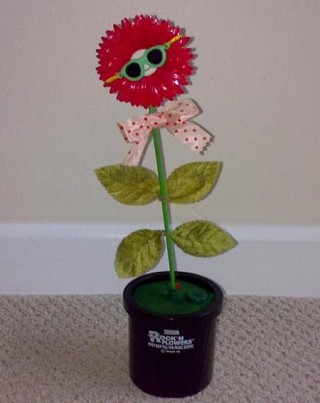
December 26
Here is why I decided to go to Japan for a long period of time:
I was an undergraduate at the State University of New York at Fredonia School of Music when I observed a teacher whose students played beautifully. After the lesson, I learned they studied with Dr. Suzuki in Japan (Nina Karbacka was one of them, from Jamestown, NY) and they recommended I do the same. I was on board! I immediately decided I wanted to go to Japan and study with Dr Suzuki. Unsure how to get there, I began to inquire at my university and found there was a graduate research program where I could study music--on one condition: that I learn Japanese. I started to study Japanese. I received the Monbusho Government Scholarship for the graduate research program at Aichi University of Education with a focus on the Suzuki Method. I observed Toshiko Hasegawa’s Nagoya class every Thursday from early afternoon until evening. My lessons were also on Thursday. I started from Suzuki Violin Book One. As I was a student in Hasegawa-sensei's class, I participated in group lessons once a month on Sundays. I played for class recitals and other regional events in Nagoya. On weekends and holidays from Aichi University studies and lessons in Nagoya, I traveled to Matsumoto to take lessons with Dr Suzuki. At that time, group lessons were every day.
I was 23 when I went to Japan and 28 when I left. I did not necessarily plan on trying to graduate when I first went there. I only hoped to study with Dr Suzuki. I originally intended to study in Japan for 18 months, which was the length of the scholarship. But I stayed almost five years.
It was easy to plan my trip to Japan because the university took care of everything. A professor from the university met me at the airport in Tokyo. We took the bullet train to Nagoya where I met my host family. I lived with the Japanese host family at first, and then later in my own apartment.
In Matsumoto, I lived in a few different apartments over three years. I went to classes on my motor scooter. The Matsumoto mountains were breathtaking. I enjoyed skiing the Japanese Alps, Shiga Kogen, and other mountains. I tried “natto” for the first time.
Lessons with Dr Suzuki were so inspiring and interesting. I learned so much about tone. For the first time in my musical education, I was asked to play open strings and listen to the resonating sound of the violin. Group lessons were such a great learning experience. Some days we would play, one by one, the same music (sometimes eight measures of Chorus from Judas Maccabaeus). It was so effective to listen to each kenkyusei, and I learned so much. In group lessons, kenkyusei were supportive of one another, often practicing in the same room and helping one another.
My time in lessons with Dr Suzuki forever changed the way I approach learning and teaching music. I now teach music and languages, and the foundation of my pedagogy is from my time studying in Japan with Dr Suzuki.
I enjoyed observing other teachers teaching children, first Hasegawa-sensei in Nagoya, and then Mori-sensei in Matsumoto. I found calligraphy class particularly challenging as a left-handed person obliged to write with the right hand. However, I was very happy to have completed a calligraphy to hang on stage at my graduation, June 25, 1993.
Photos in Japan

Memories of studying in Japan, 1988-1993
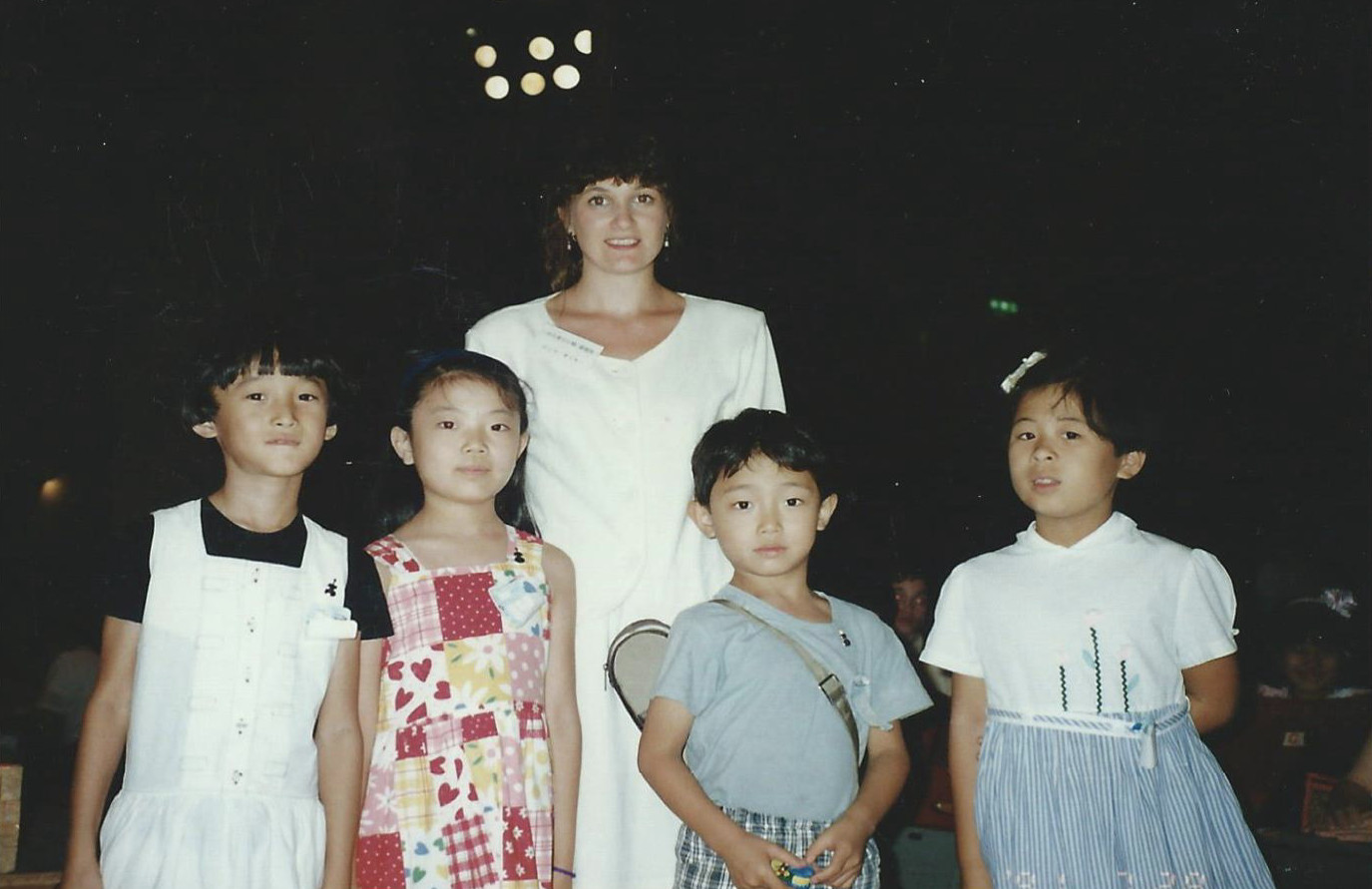
Students of Hasegawa class of Nagoya

Hasegawa class, Nagoya (I am in the front row, far right). I was a student of Toshiko Hasegawa, 1988-1990

Lesson with Dr. Suzuki

Lesson with Yuriko Watanabe in Matsumoto

Dr. Suzuki’s birthday Panda cake

Dr. Suzuki’s birthday Panda cake

With other kenkyusei playing for Dr. Suzuki’s birthday celebration
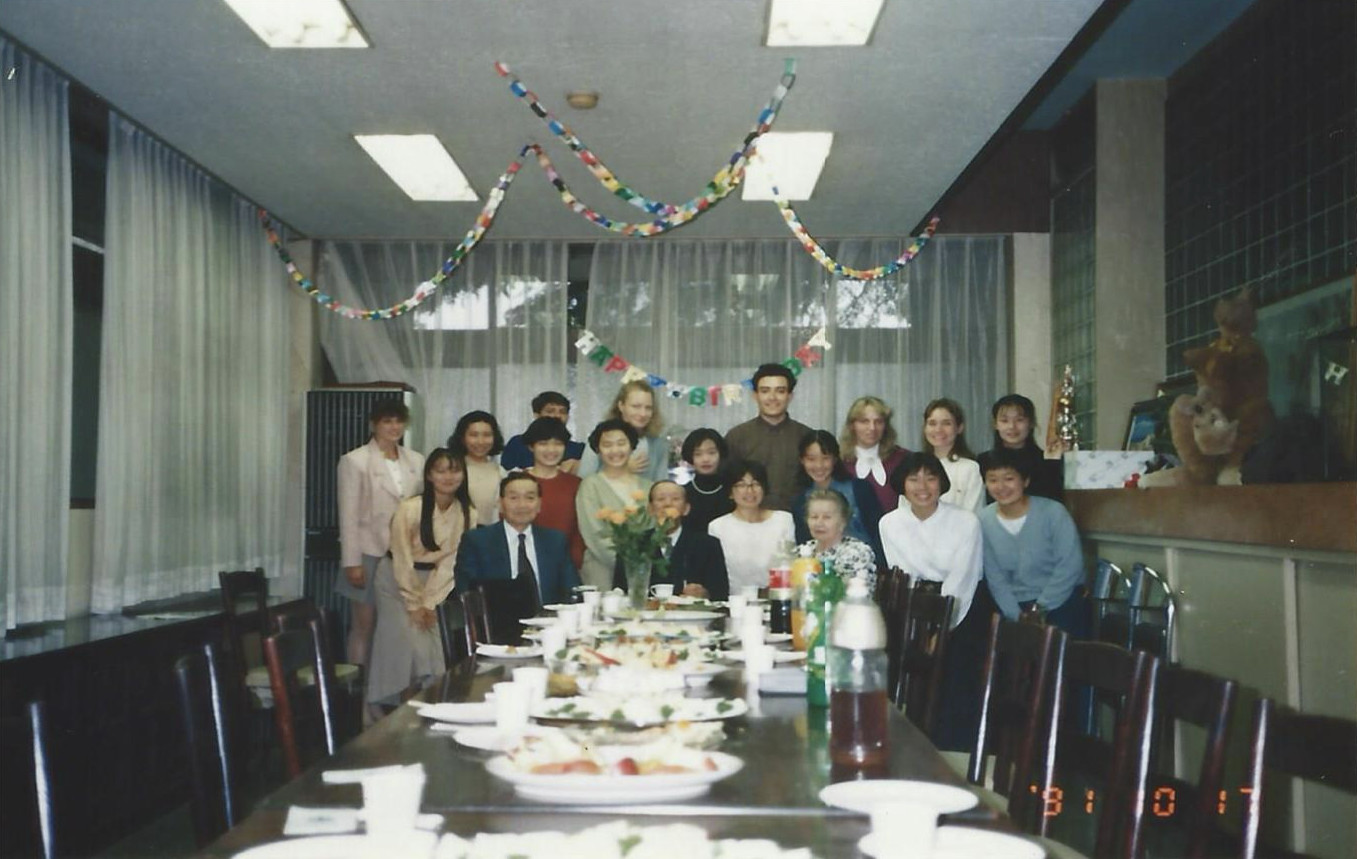
Group picture with Dr. Suzuki for his birthday celebration
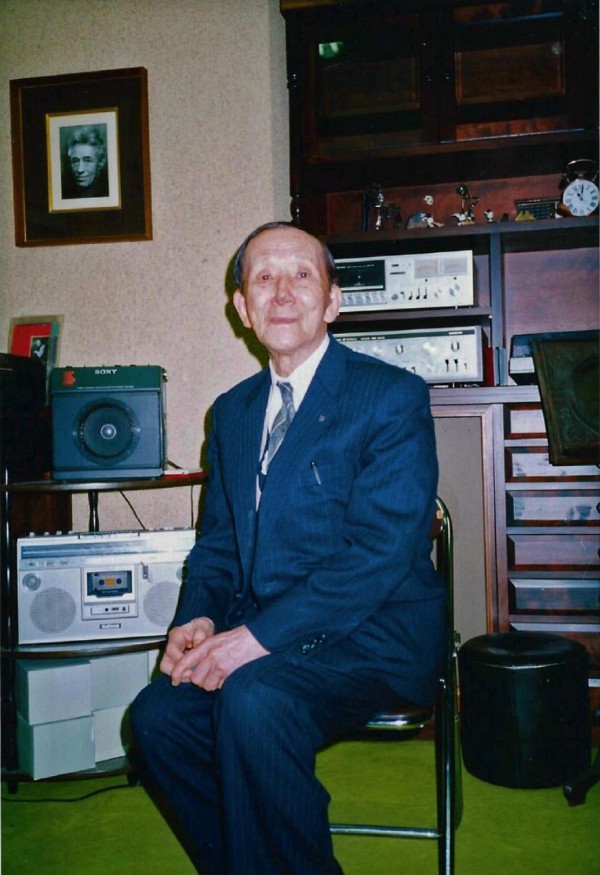
I took this of Dr. Suzuki in his studio

At lessons one day
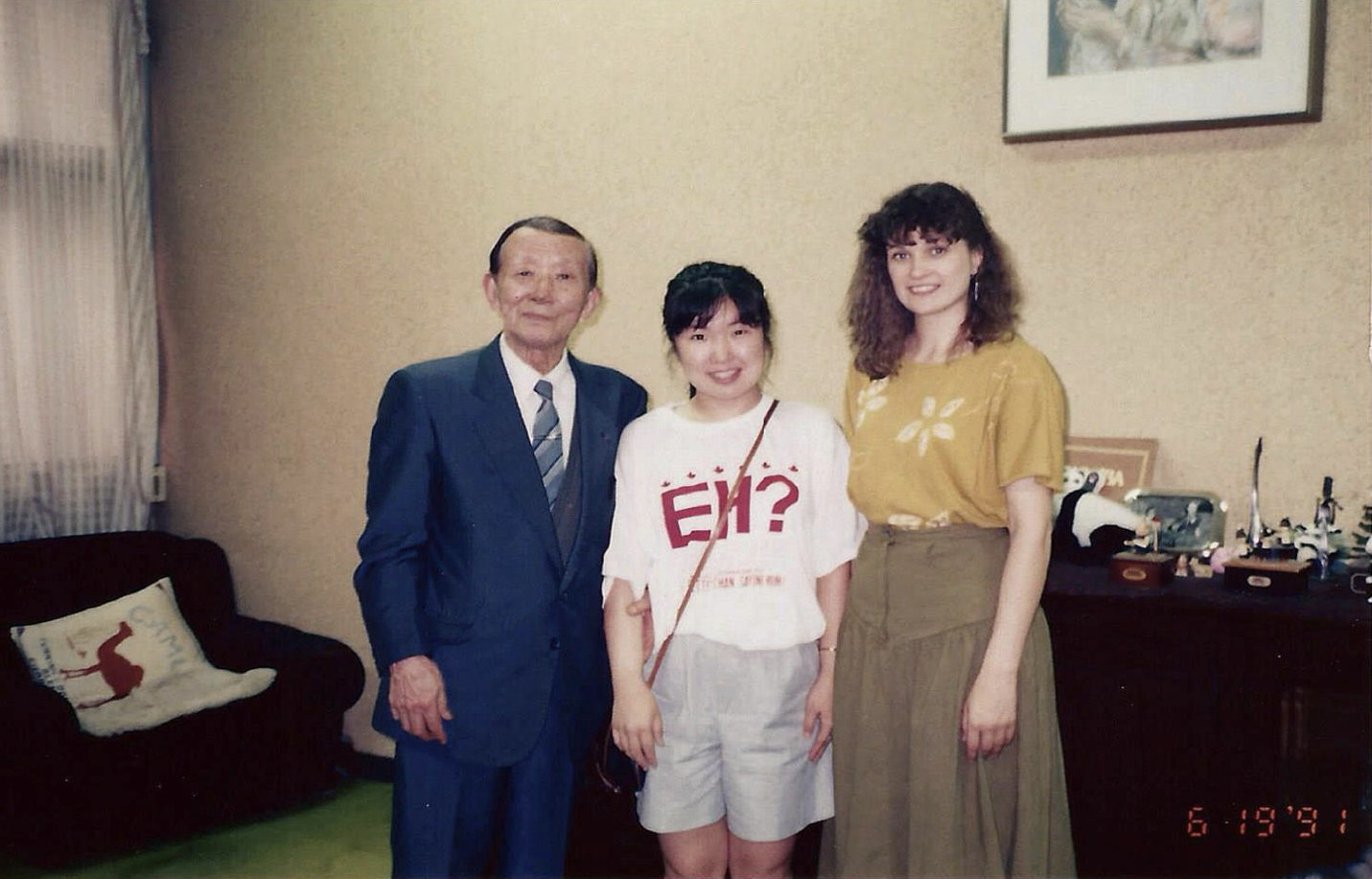
One of my friends from Aichi University came to observe lessons

Dr. Suzuki with my mentor and dear friend, Masumi Ormandy, of Tokyo
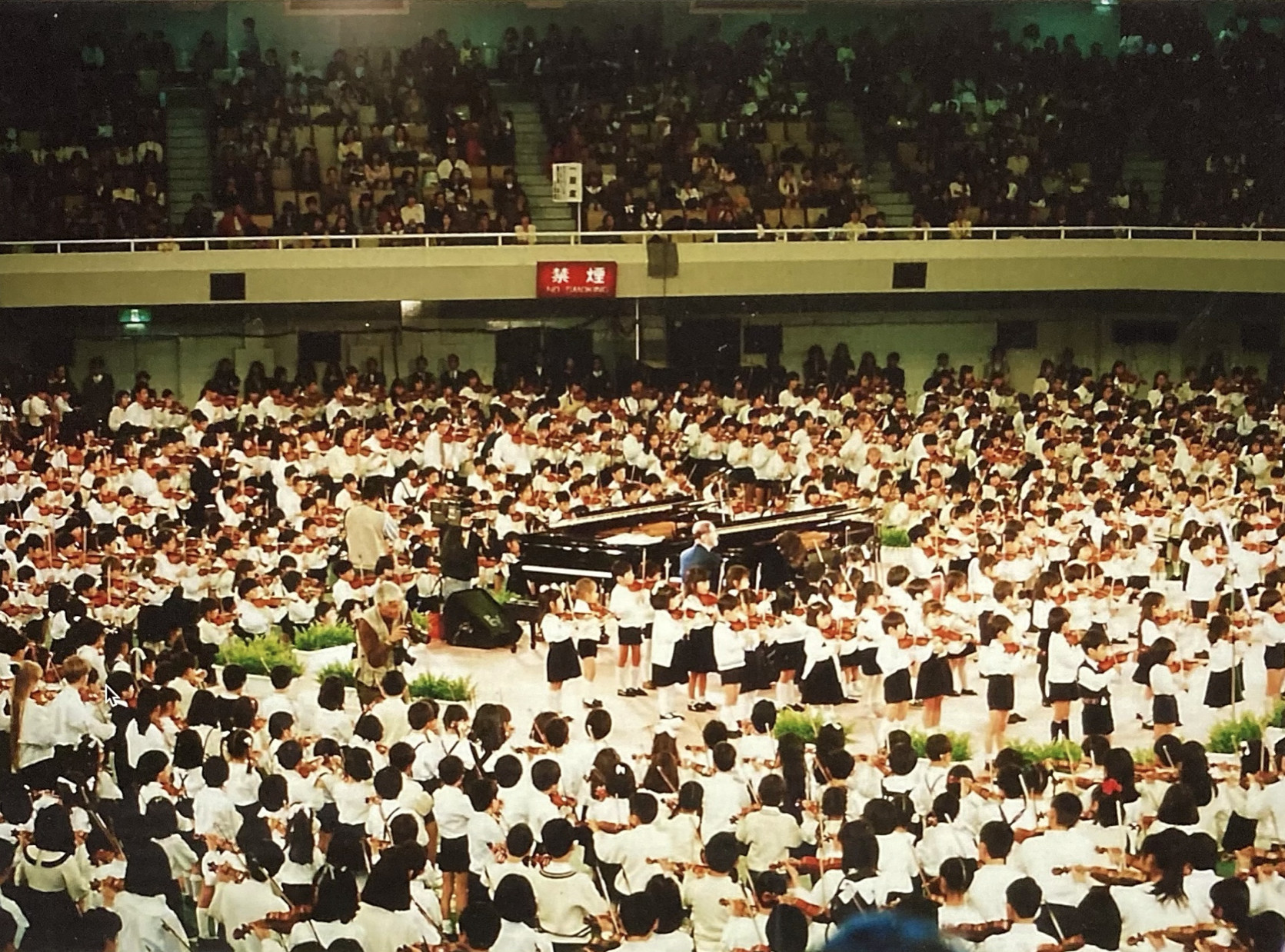
National Concert, Tokyo Budokan

National Concert, Tokyo Budokan
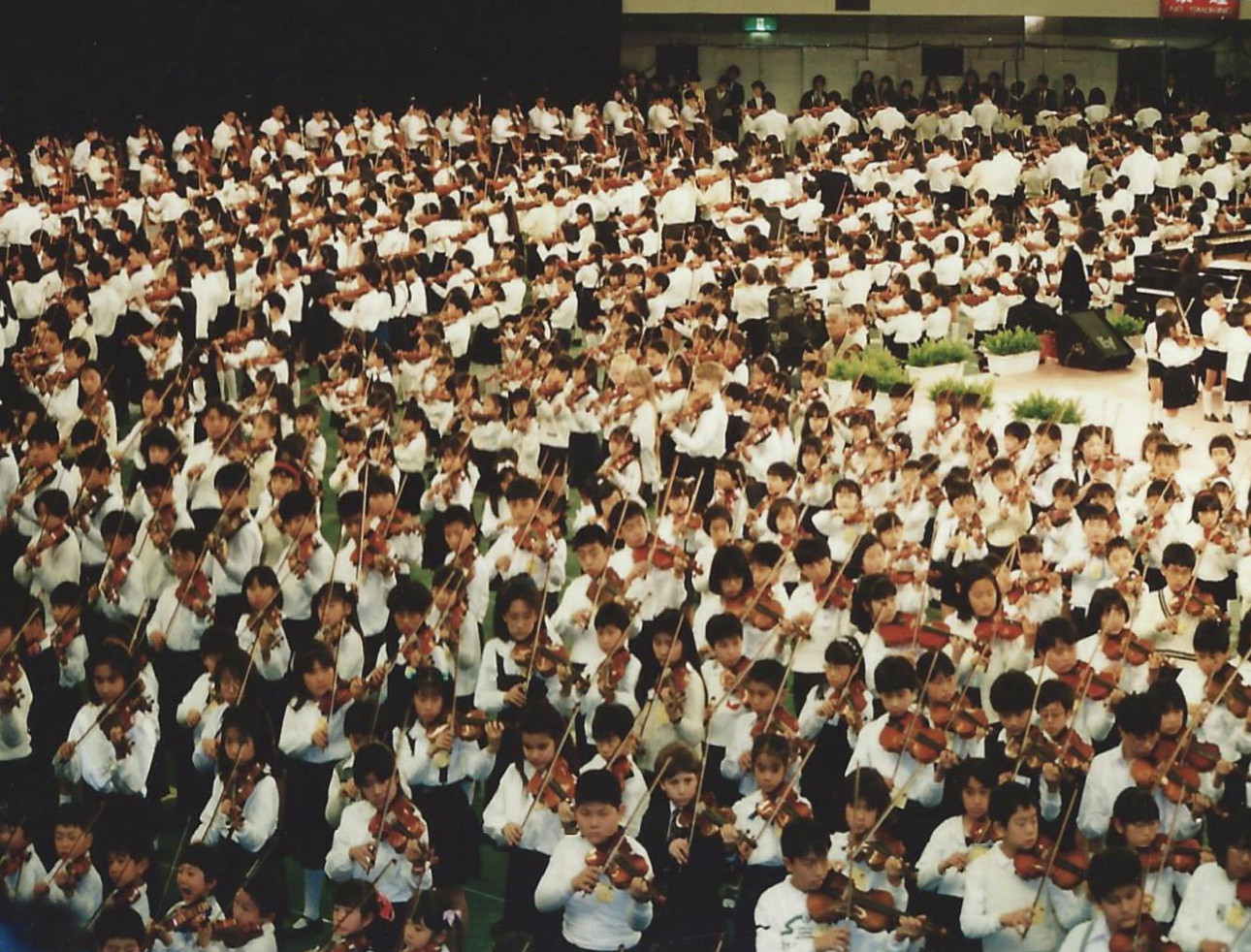
National Concert, Tokyo Budokan
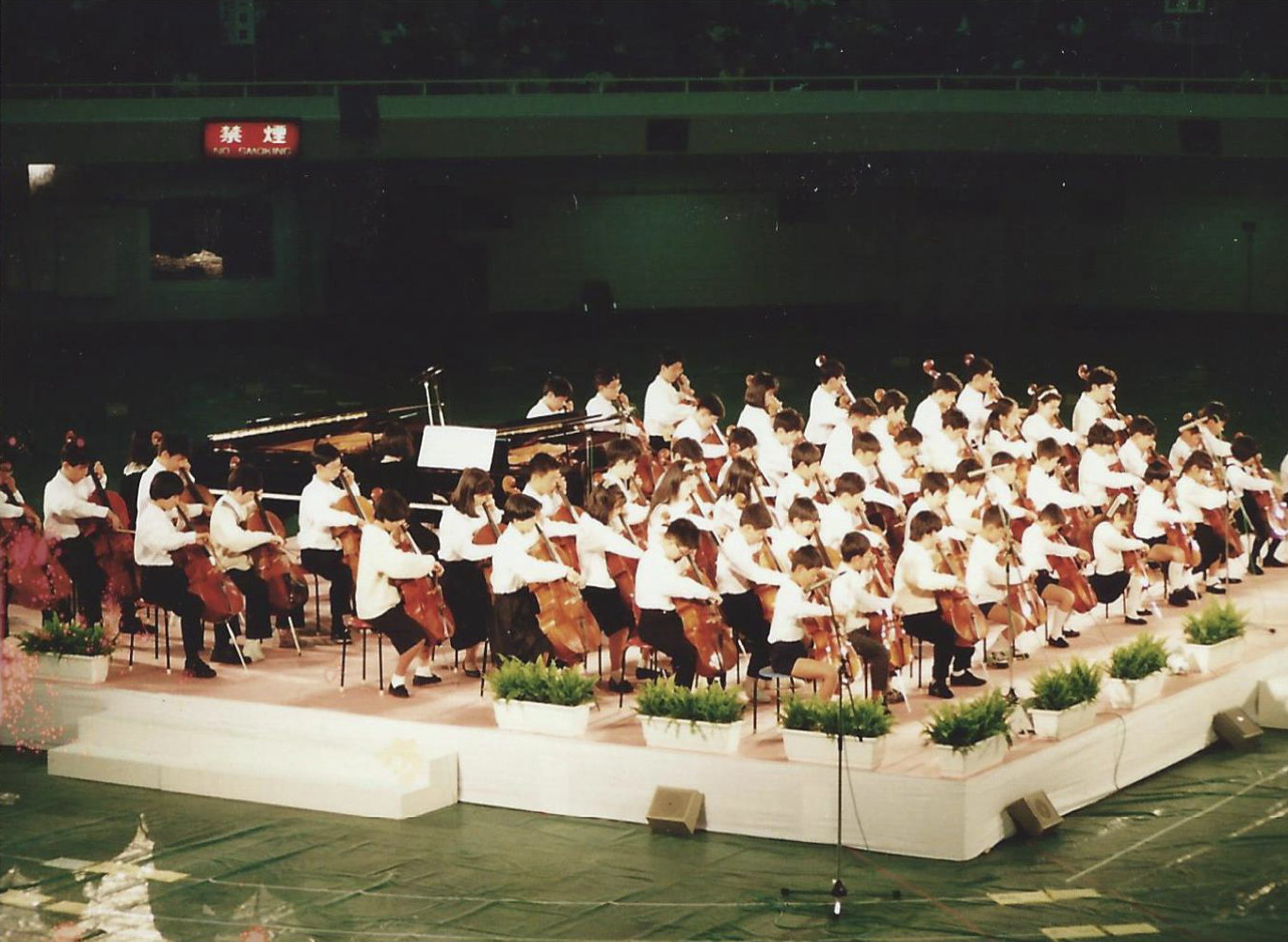
National Concert, Tokyo Budokan

Sumo in Nagoya
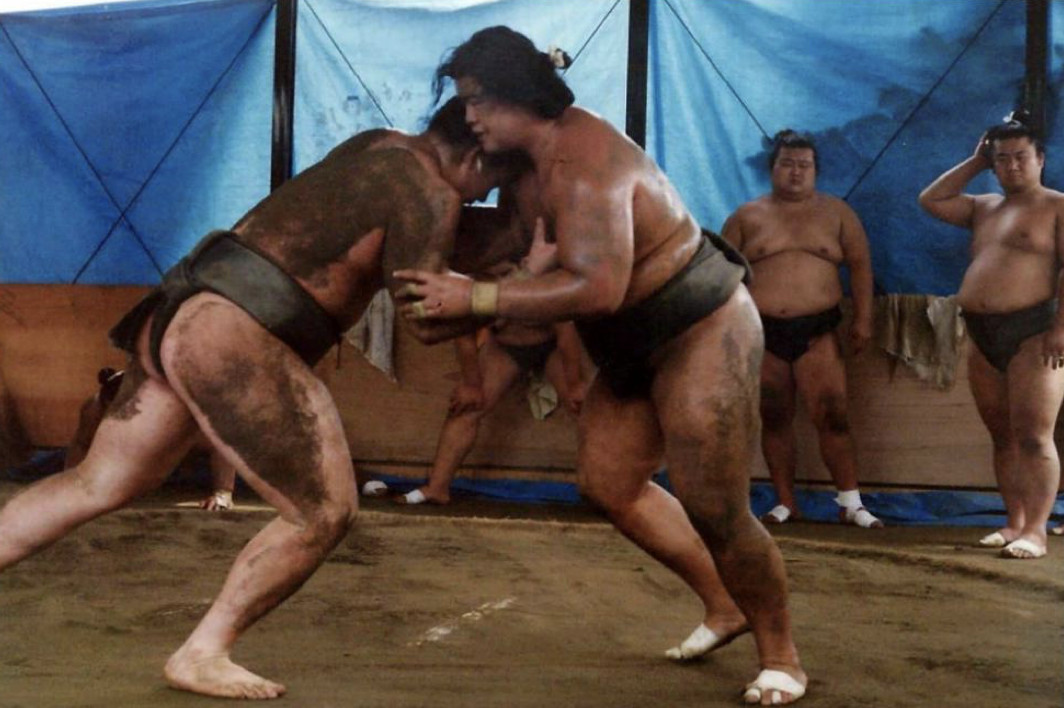
Sumo in Nagoya

Sumo training in Nagoya

Sumo training in Nagoya
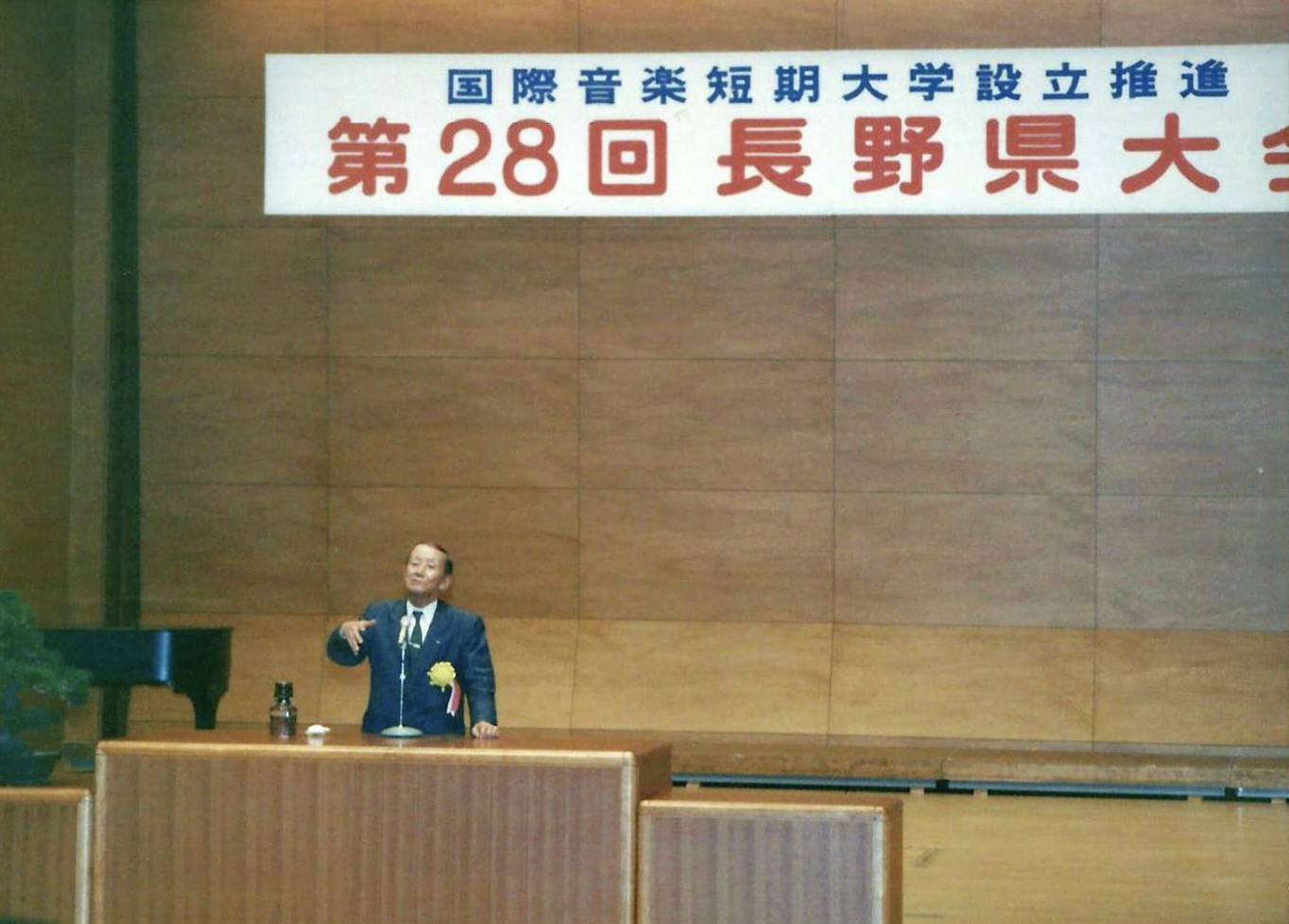
Hamamatsu, 1991

Dr. Suzuki in Hamamatsu

Children's Concert, Dr. Suzuki at piano
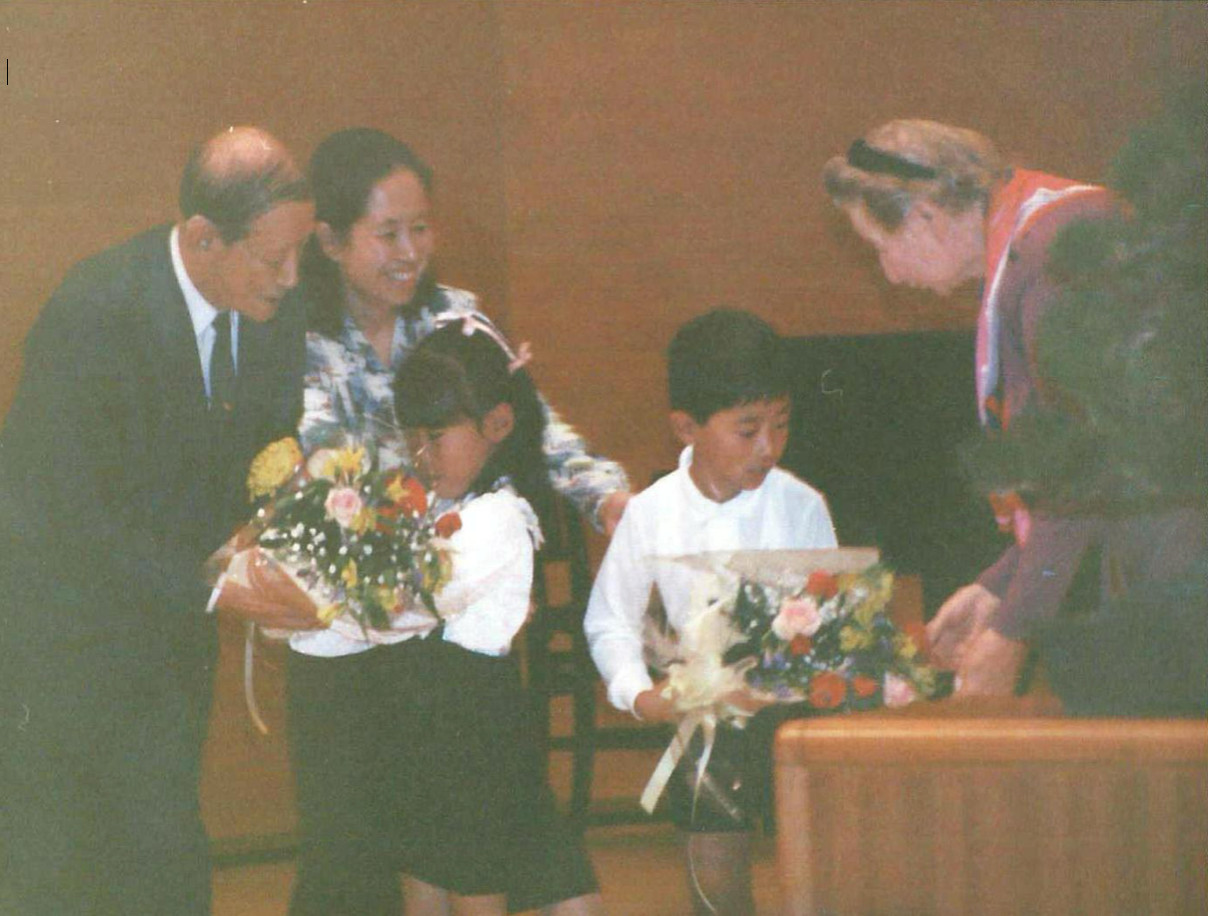
Children giving flowers to Dr. and Mrs. Suzuki

Dr. and Mrs. Suzuki

Dr. and Mrs. Suzuki with kenkyusei at National Teachers Convention, Hamamatsu
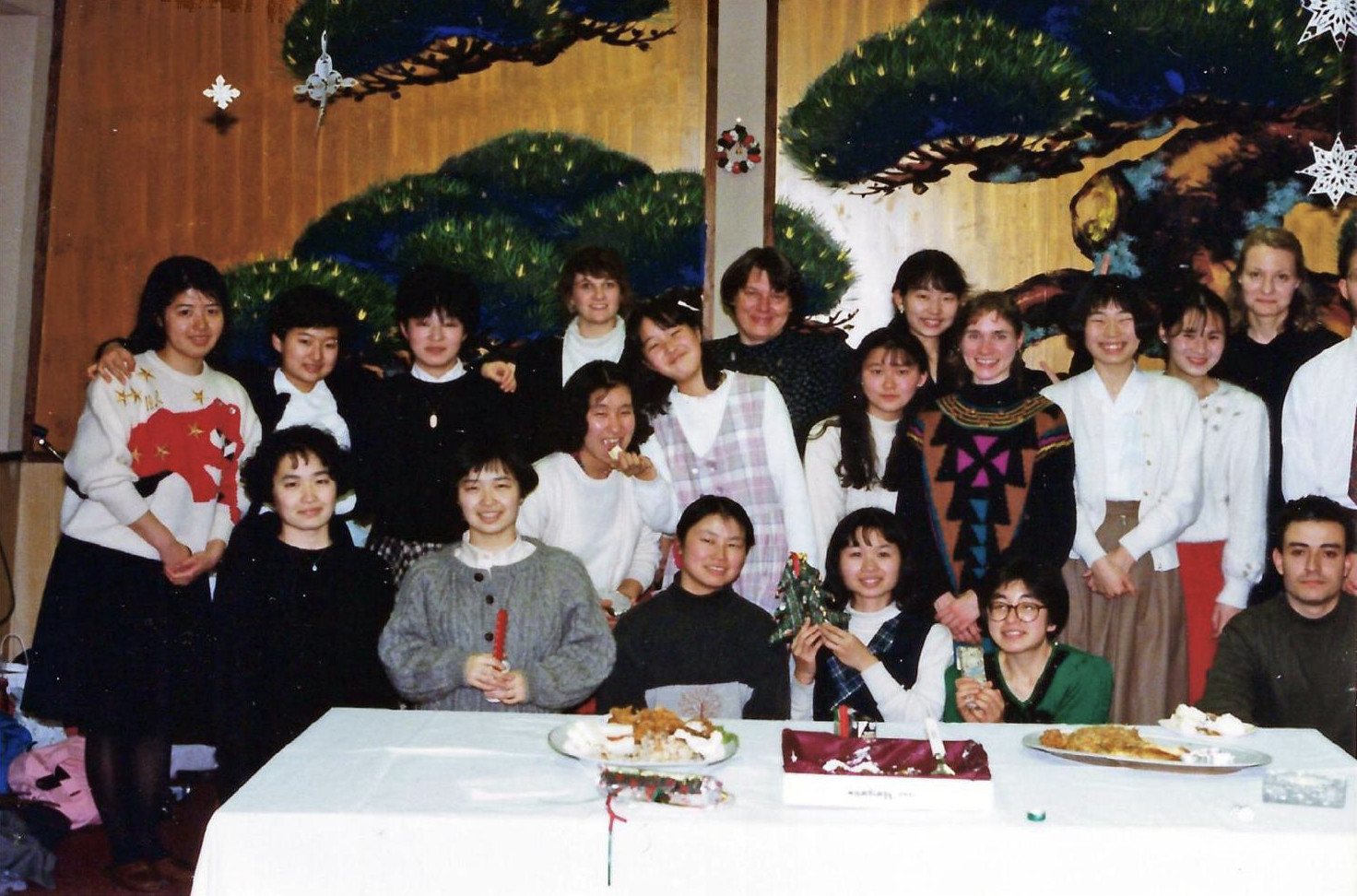
Kenkyusei

Playing in a string quartet

Dr. Suzuki with students in kaikan recital hall
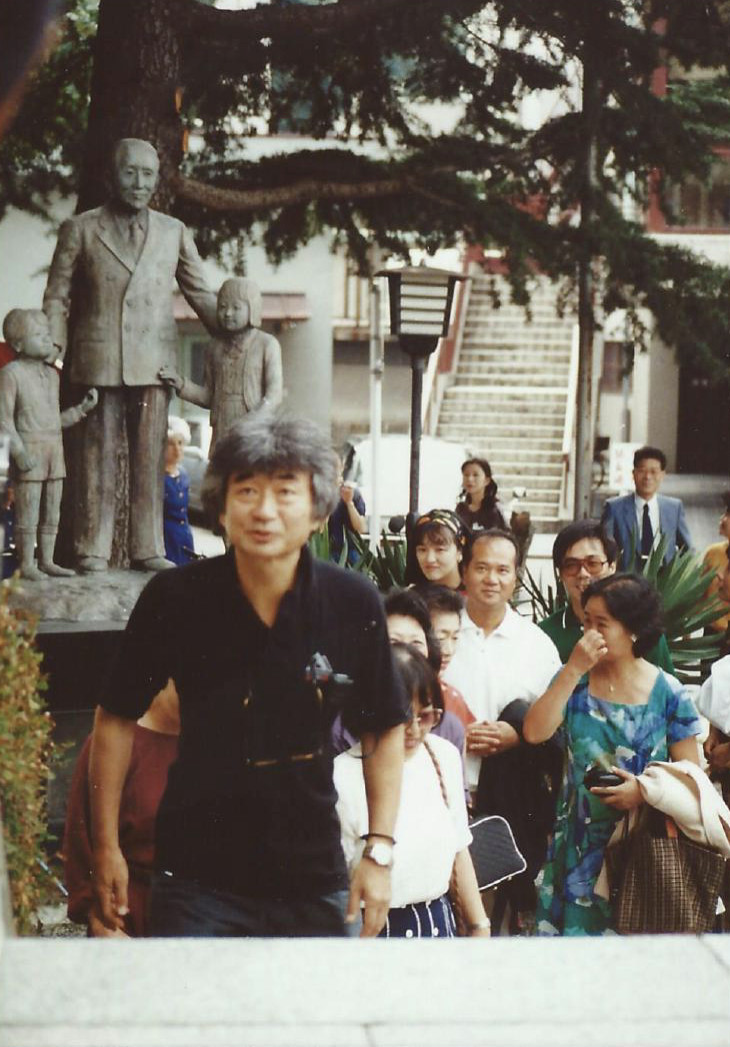
Seiji Ozawa visit

Seiji Ozawa with Dr. and Mrs. Suzuki
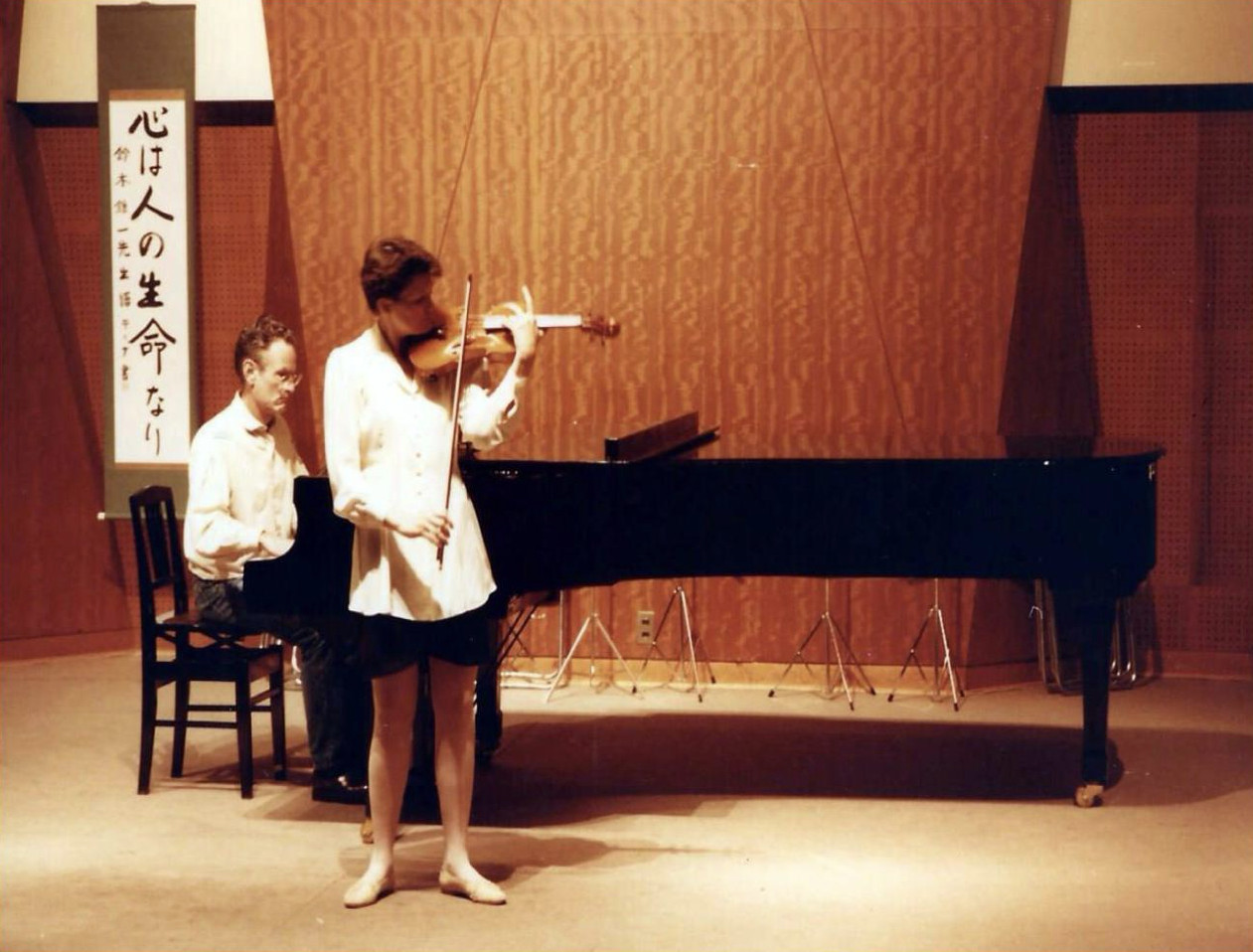
My graduation concert, June 25, 1993

My graduation concert, June 25, 1993
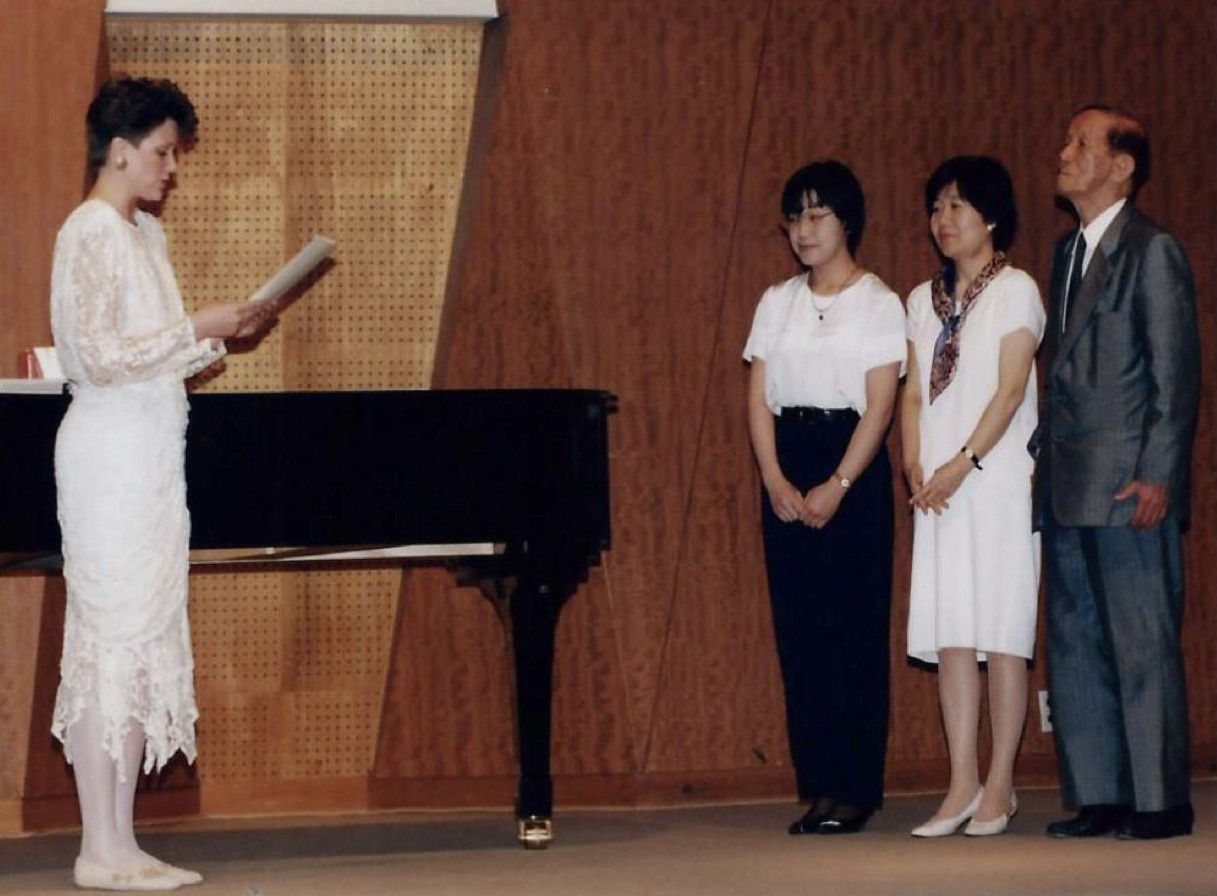
Graduation June 25, 1993—I read my Teacher’s Pledge in Japanese. Toshiko Hasegawa, my teacher from Nagoya, is in the middle.

On stage after my graduation recital
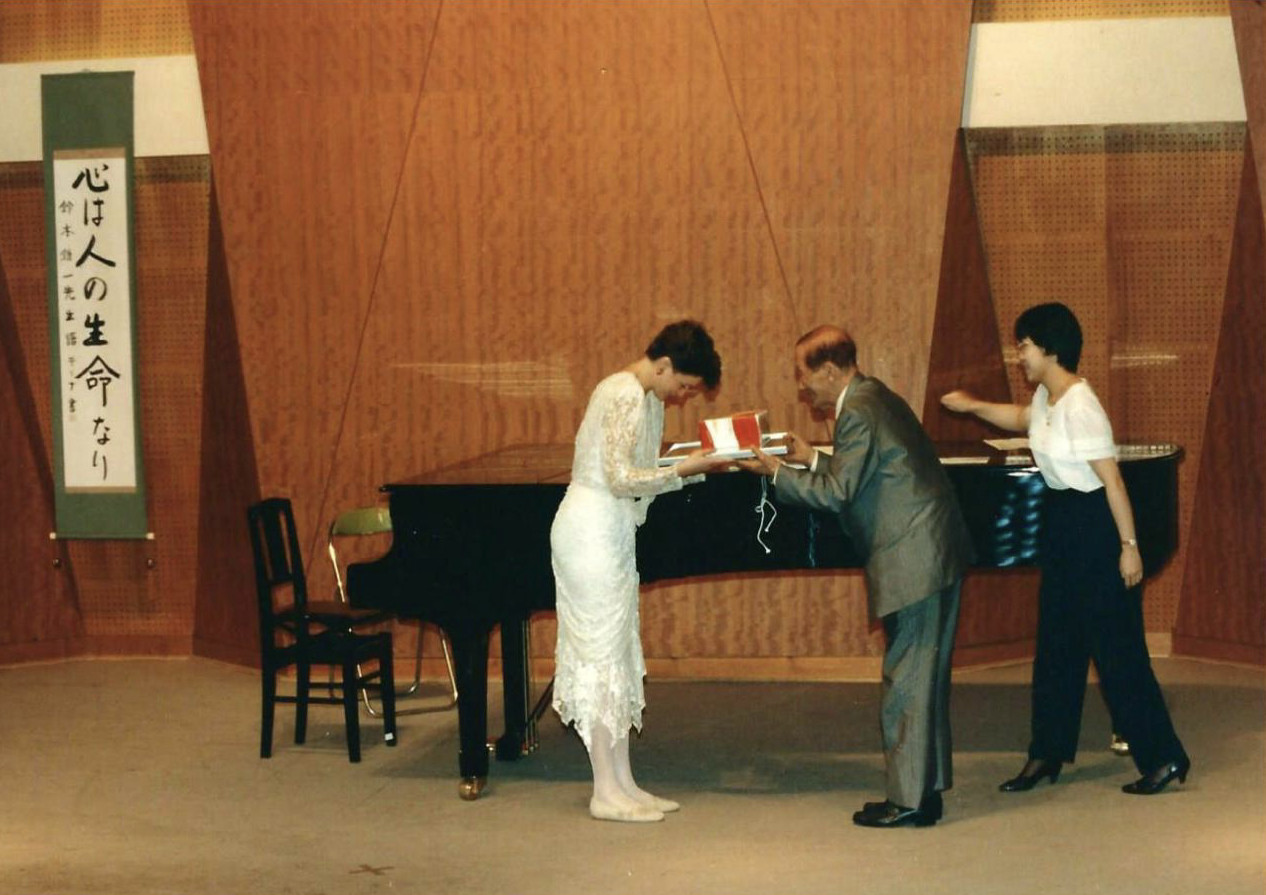
On stage after my graduation recital
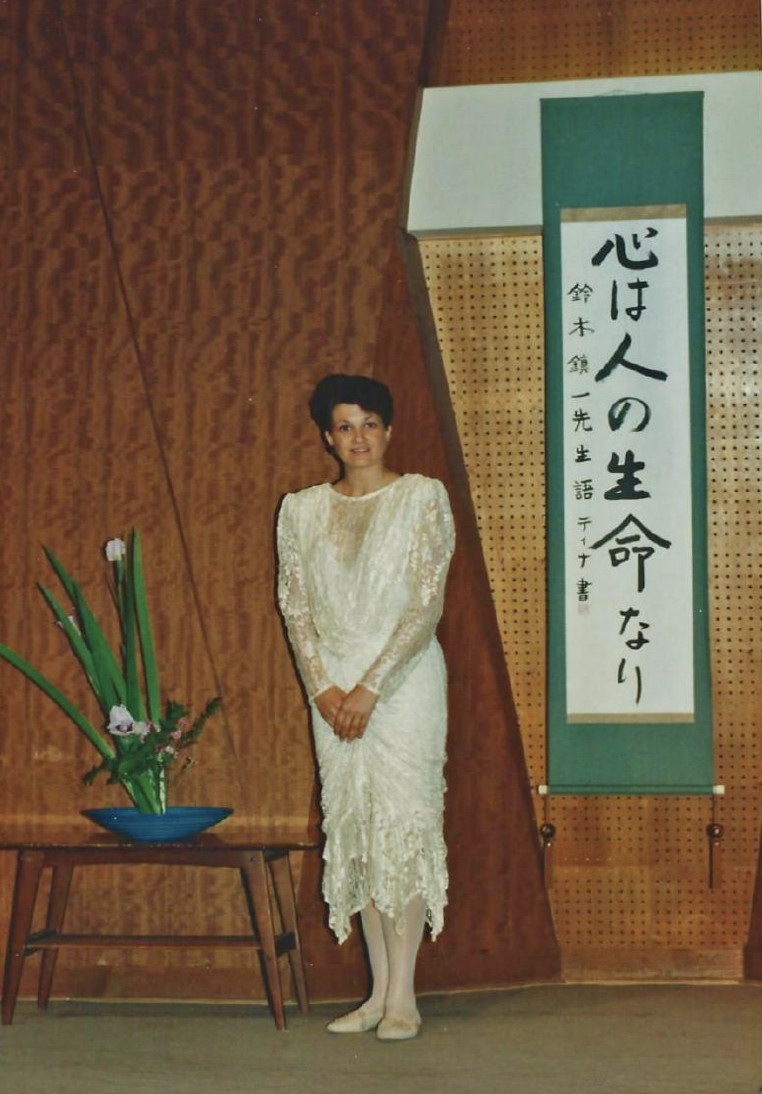
With my shuji on stage after graduation
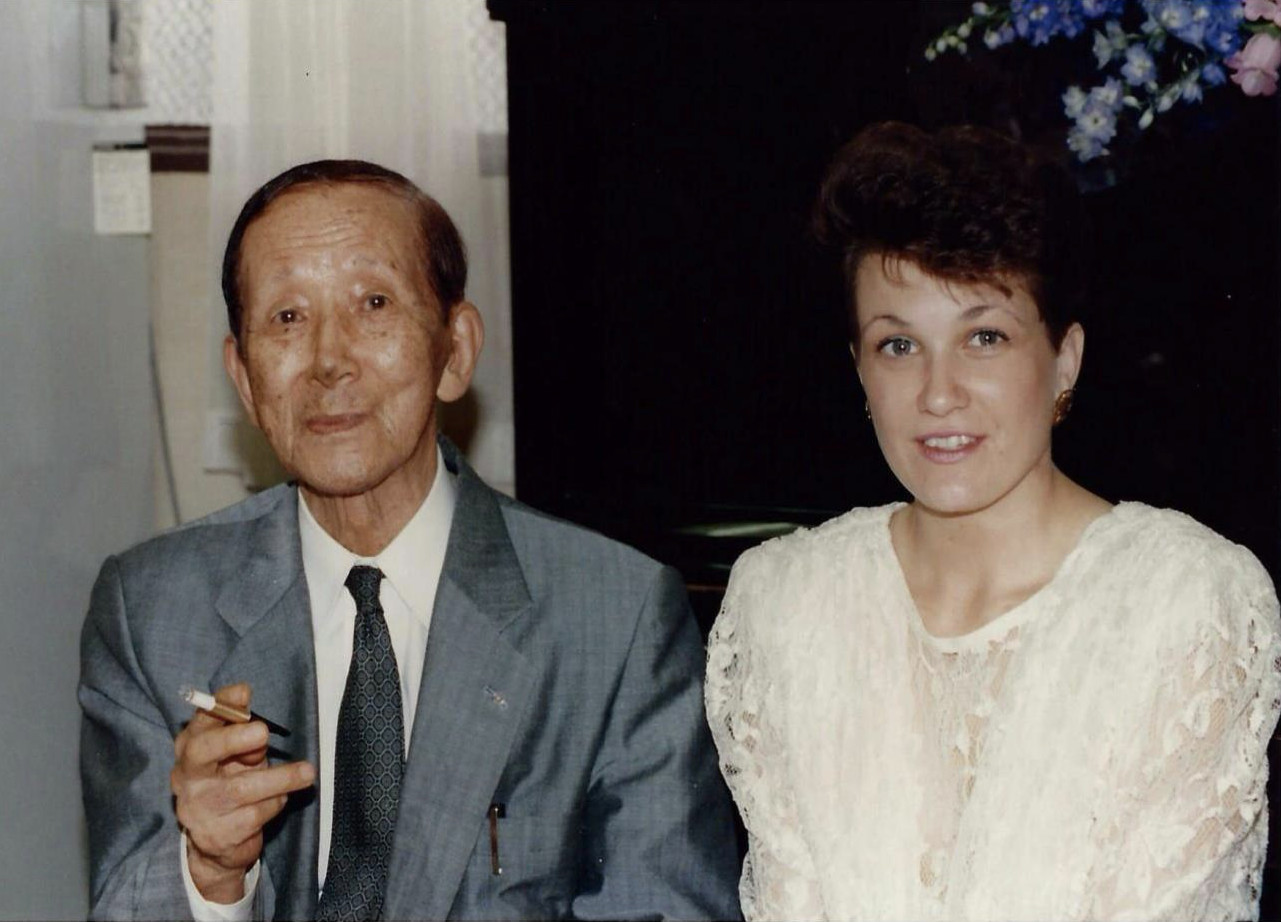
Graduation tea with Dr. Suzuki

Graduation tea with Dr. Suzuki. Ms. Hasegawa is speaking.

Graduation tea

Graduation tea

Graduation tea
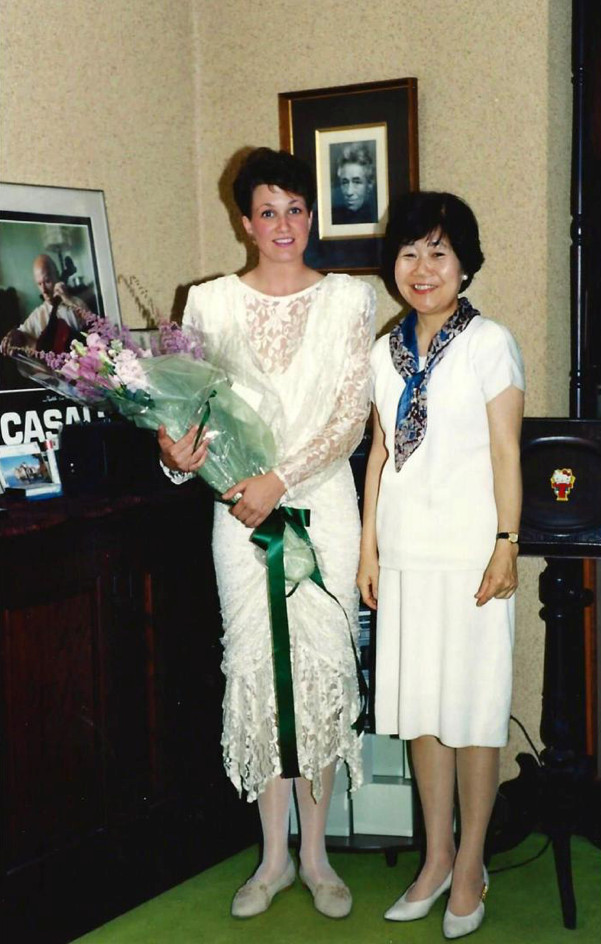
Tina and Ms. Hasegawa

Tina and Dr. Suzuki

Graduation shikishi

